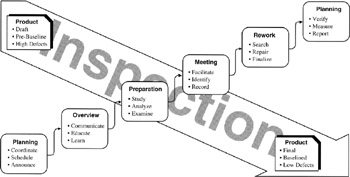Chapter 3: Methods for Software Process Improvement
Methods for software process improvement (SPI) include de facto, emerging, and industry standards for improving quality, productivity, and performance. Methods for SPI are designed specifically to improve product quality and improve software project management performance. Several methods for SPI are designed to evaluate, certify, and qualify suppliers to serve government agencies. Some are designed to certify firms to adhere to regulations for international trade. Some methods for SPI are simple meetings to improve software quality. Some methods for SPI are technically challenging approaches to performing individual and group -based project management. Other methods for SPI are large sets of criteria designed for supplier selection and establishment of priorities for internal SPI. Methods for SPI share some common features regardless of their size , scope, and complexity. Methods for SPI are tedious , manually intensive , expensive, unpopular, and invoke fierce resistance. They invariably are seen as unnecessary bureaucracy among computer programmers and software engineers . Some of the methods for SPI are small and highly effective. Some have impressive results in spite of their expense. Some take years and millions of dollars to apply in spite of their popularity. The methods for SPI examined in this chapter all share common characteristics. They are well defined, repeatable, measurable, beneficial, and common in use. Another commonality is that they are difficult to apply and very expensive to use.
3.1 Software Inspection Process
The Software Inspection Process is a type of meeting that is held in order to identify defects in software work products. In reality, the Software Inspection Process is a highly structured and facilitated group review. It is held to objectively identify the maximum number of software defects. Its purpose is to improve software quality. The Software Inspection Process is a structured and neutrally facilitated meeting in which technical peers identify defects in software work products. The defects must be corrected, without suggesting solutions or interference from the originator of the work product. In short, the Software Inspection Process is for technical experts to identify defects that must be corrected. However, the technical experts cannot suggest design alternatives or subjective improvements to the product. Figure 1 illustrates the Software Inspection Process.

Figure 1: Software Inspection Process Stages
The Software Inspection Process may be held at the end of software life cycle phases. It may be held after software work products have been completed within individual phases. It may also be held when components of software work products have been completed. It is often held at critically important decision points within the software life cycle. The Software Inspection Process is a scheduled event in software project plans. It is not an ad hoc activity subject to preemption.
The Software Inspection Process consists of six major stages, phases, activities, subprocesses, components, or steps. The six major steps are planning, overview, preparation, meeting, rework , and follow-up. Each of the steps defines and differentiates the Software Inspection Process from any other type of meeting or review. They are designed to add value, structure, repeatability , and measurability. More importantly, the six major steps are designed to optimize the number of defects identified, thus ensuring optimal quality.
The Software Inspection Process is the most measured, analyzed , and used method in the history of software engineering. It is also the most ubiquitous, researched, and reported upon SPI method ever.
EAN: 2147483647
Pages: 145